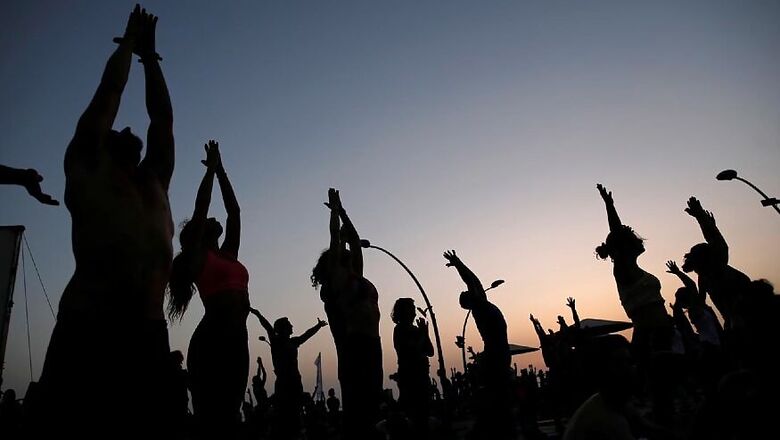
views
New Delhi: You can hug, air-kiss or shake hands of course. But in the age of the Coronavirus, the world, it seems, is looking at the traditional Indian 'namaste' to greet, convey respect and also maintain a safe distance.
Several world leaders and others are now using the simple joining of hands to say "Hello", "Hi" and "How do you do" the Indian way with the 'namaste', a combination of the Sanskrit words 'namas' (bowing) and 'te' (to you).
Falling in line with one of the fundamental precautionary measures to avoid physical contact, US President Donald Trump on Thursday greeted Irish Prime Minister Leo Varadkar with a 'namaste'.
Britain's Prince Charles did the same recently when he put out his hand for a handshake but then quickly withdrew to fold them together in a 'namaste'.
French President Emmanuel Macron also did a 'namaste' to welcome Spanish king Felipe on Monday. And earlier this month, Israeli Prime Minister Benjamin Netanyahu advised his citizens to adopt 'namaste' as a way of greeting instead of shaking hands to check the spread of COVID-19, that has been declared a pandemic by the WHO and infected 131,500 people in 116 countries and territories. More than 4,900 people have died of the infection.
"Religious and secular culture come together in the increasing use of namaste (pronounced \NAH-muh-stay\) in English: the term is associated with both Hinduism and yoga," says the Merriam Webster dictionary.
While the Coronavirus is responsible for the recent surge in popularity of the 'namaste', it became familiar in the West thanks to yoga, originating in India but practised by millions all over.
In yoga, 'namaste' is a 'mudra' or a posture that involves holding both palms together close to the heart. It is practised to ensure wellness of the upper body.
"When we put our hands together and hold it close to the heart, it stimulates the heart 'chakra'. The 'namaste mudra' benefits the thoracic region, including the immunity of the lungs," Vinod Sharma, a Delhi-based yoga instructor, told PTI.
According to Kesavan Veluthat, a professor of history at Delhi University, the cultural origins of the Indian greeting are rooted in Hindu society's deeply entrenched casteism.
The Sanskrit scholar said 'namaste' came into existence to allow those belonging to the higher castes keep their distance from the "untouchables".
"India, particularly the Hindu society, is heavily hierarchical, with caste defining social norms," Veluthat told PTI.
"Other societies also have inequalities, for example class differences in the western world. But in those societies there is no untouchability," he added.
He added that historically, it was customary for members of the same caste to exchange a 'namaste'. But a Brahmin, for instance, would never offer a 'namaste' to a Dalit.
After a boost through the spread of yoga several decades earlier, the traditional form of greeting is back in vogue because of COVID-19.
















Comments
0 comment